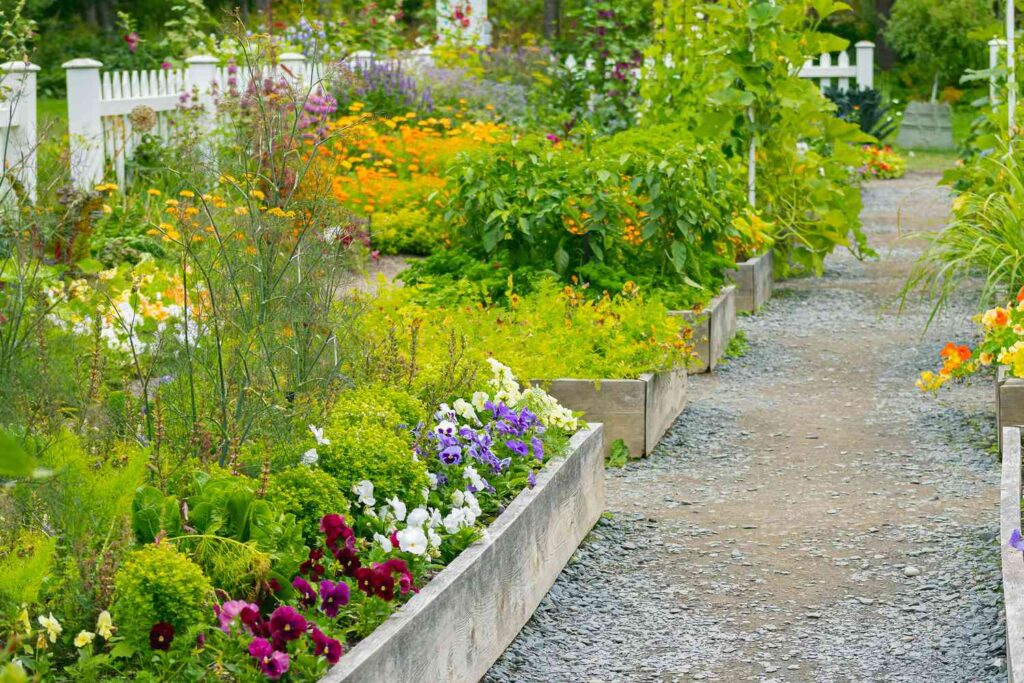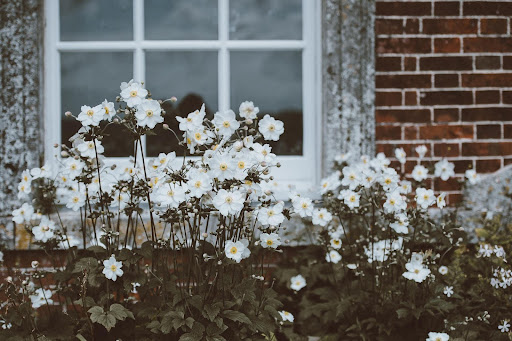If you’re dissatisfied with the look of your garden, yard, or home, it might be because of the lack of landscaping or flowerbeds. Landscaping is one of the best ways to improve the look and curb appeal of your home, and it can even raise your home’s value. Along with keeping your yard thriving by regularly mowing, watering, and applying lawn fertilizer, having attractive flowerbeds and borders is essential to the look of your property. If your flowerbeds and landscaping are looking weedy, poorly maintained, or are suffering from neglect, here are the steps you will follow to revitalize and renew them:
Evaluate Your Flowerbeds
Before you make any changes to your flowerbeds or purchase plants, take the time to evaluate your situation. Look at the layout and location of the beds and see if you want to change anything. Now is the time to modify or change the location, size or shape of your flower garden.
Also take the time to evaluate the health and condition of your flowerbeds. Are there any mature plants you want to keep? Are the beds overgrown with weeds? How is the soil quality? If you aren’t sure what kind of soil you have or how healthy it is, consider sending off a sample to be evaluated. You will then be able to add amendments and fertilizer to adjust the soil and create a more ideal environment for the plants that will be growing there.
Finally, look at the slope and drainage in your beds and be prepared to do dirt work, add borders or retaining walls, and install drains if needed.
Choose the Right Plants
Before you make a plan for your flowerbeds, you should choose the best plants. It’s important to choose plants and flowers that will grow well in your area, such as those suited to your climate and soil conditions. If you live in a dry climate, water-saving drought-tolerant plants are a good choice. If you live in a hot or cold area, make sure that the plants you choose can tolerate the temperature.
You should also consider the mature size of the plants, as well as the growth rate and how long it will take for them to “fill in”. If the plants you are considering will grow slowly, consider planting shorter-lived filler plants, such as annuals or biennials between them to make a more complete look until they mature.
Make a Plan
Now that you know how your beds are doing and the plants you want, it’s time to make a plan. Many people plan their flowerbeds haphazardly or don’t plan at all. However, if you want to have a well-organized, attractive, and easy-to-maintain flowerbed, it’s a good idea to make a plan. This might mean drawing a simple sketch of the flowerbed you are imagining, with specific plants and flowers in mind. You could also draw a more detailed plan, similar to a blueprint, with to-scale drawings and planned plantings based on season and availability.
While planning, take into account each plant’s mature size, the distance from other plants, and if they will block any windows at their full height. Also evaluate the bloom time of the different plants so you can create a garden that blooms throughout the season. Planning your plantings can help you to have an attractive, long-lasting flower garden.

Clean up Your Flowerbeds
Once you’ve chosen your plants and planned your flowerbeds, it’s time to clean up your beds. Make sure that you clear the ground of debris such as dead plants, weeds, and unwanted flowers. Rake and remove dry leaves, sticks, and any trash and dig anything that is left in the dirt.
Improve Your Soil
Now that you have removed dead or unwanted plants and cleaned up your flowerbeds the next step is to make any soil improvements that you need. If you aren’t sure what improvements you need to make or how healthy your soil is, consider having it tested for things like PH, nutrients, and similar qualities. Not only will this help you understand how to amend your soil, but it will also help guide you in plant selection.
You should also add fertilizer and organic material such as compost to your soil before planting. This can help add nutrients and richness, loosen the soil, and provide an ideal environment for your new plants.
Plant Your Flowerbed
Finally it’s time to plant your flowerbeds! Follow your plan and the instructions on your plants when laying out and planting your flowers. Make sure that you dig each hole large enough and add compost if recommended. Don’t forget to water each flower after you’ve planted it.
If you are planting any seeds, you will need to prepare the seedbed by loosening and smoothing the soil. Plant the seeds according to the directions and water them gently.
Whether you have planted seeds, plants, or both, cover the bare dirt with some form of mulch, such as straw or landscaping bark. This helps to keep the soil most and helps discourage weeds.
Maintain Your Flowerbeds Regularly
Once your flowerbeds are planted, you will have to maintain them regularly in order to keep them healthy and thriving. Initially, weeding and watering will be the most important maintenance tasks. Later, as the plants become more established, the frequency of these needs will decrease. You will also need to weed your flowerbeds regularly and maintain a layer of mulch to protect the soil. The plants will need to be fertilized occasionally and some flowers will need to be pruned, deadheaded, and recieve seasonal maintenence such as cutting back when dormant, dividing, or covering to protect from frost.
Conclusion
By following these basic steps, anyone can plan and implement an attractive, successful and thriving flowerbed. While the job can seem overwhelming at first, by taking it one step at a time and spreading the task over several weekends, the job can be manageable and the result will be worth the hard work and time.






